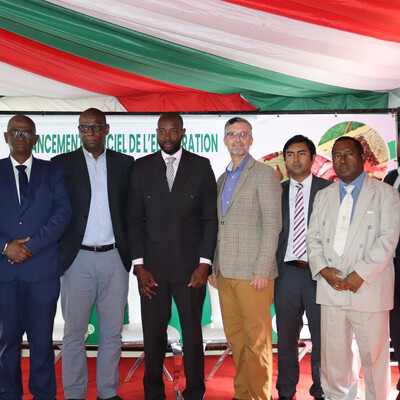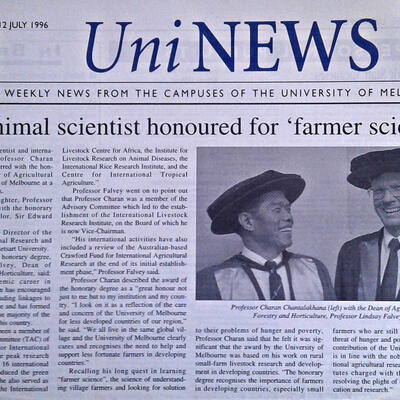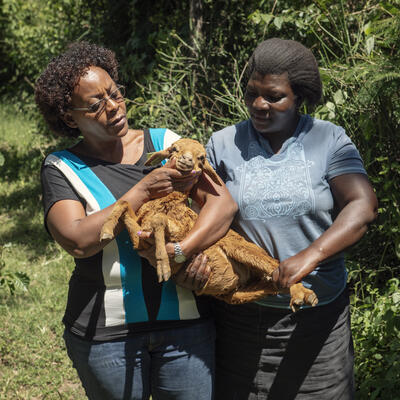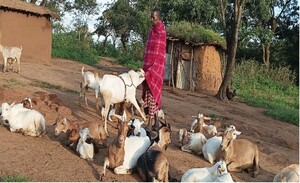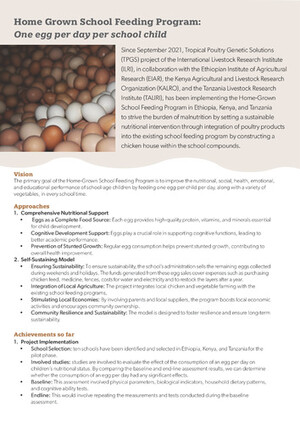
Seeking new approaches for increasing smallholder chicken productivity in Africa
Most smallholder chicken production projects that have taken place over the last few decades in Africa have focused on controlling diseases, reducing predation and mortality through vaccination campaigns, controlling internal and external parasites, improving housing, feeding and management of the laying process, and, natural incubation and chick management (Wethli 2003; Thieme et al. 2012).
But most of these projects, including the successful ones, have failed to spur the anticipated growth and development of the smallholder production sectors in the respective countries, with limited opportunities for poor farmers to access the various improved birds. Some programs failed to take-off due to the inability of poor farmers to access feed grains and health products. Programs have also previously attempted genetic improvements (e.g. involved introduction of exotic commercial cocks for breeding with indigenous hens), but most of these have neither been systematic, nor long-term enough to have impact.
Tadelle Dessie, program leader of the African Chicken Genetic Gains (ACGG) program says a different approach is needed to improve smallholder chicken productivity in the continent. He says ACGG is aiming ‘to identify, source and test different options (of tropically adapted and yet productive chicken strains) in different contexts and identify farmer-preferred genetics for the specific contexts.’ According to Tadelle, the program will also link with the private sector for further improvement, multiplication and delivery at scale.’If we can achieve the above, then we have done our job!‘

Tadelle Dessie, program leader of the ACGG program (photo credit: ILRI).
The ACGG program aims to leverage existing research and to implement new and innovative approaches. To do this, we have four unique pillars:
- High-producing genetics that are well adapted to low-input production systems: While the chicken value chain has received heavy investment, little of this has been targeted at improving genetics for smallholders, in particular. Therefore, this work targets genetics because we believe that genetics is key to increased productivity and can be utilized as a ‘pull factor’, positively influencing investment and entrepreneurship in the other aspects of the value chain such as improved health and feeding interventions.
- Farmer preferred breeds of chickens: Again, focusing on smallholder farms, the principle driver of product development is farmer preferences.
- Innovation platforms for developing solutions across the value chain: The platform will be informed by the results of need-driven applied research, the focus of which is to generate and mobilize new knowledge in chicken science, genomics and genetics, to deliver increased productivity in small-scale, intensifying chicken systems in sub-Saharan Africa, in order to continually improve the program.
- Public-private partnership for improvement, multiplication, and delivery: This chicken platform is strategically designed and implemented to foster public-private partnership. Public-private partnership are critical to the long-term success of the program and maintenance of ongoing relationships with the private sector is critical to ensuring the quality, sustainability, and impact of this research platform.
- Women at the centre to ensure success: Because women are key actors in smallholder chicken value chains (i.e. own, manage flocks and trade in the chicken and chicken products), the program places women at the centre of its activities.
References:
- Thieme, O., Rota, A., Sonaiya, E., Fallou Gueye, E., Bagnol, B., Alders, R. (2012). A Decision Tool Box for family Poultry Development. XXIV Worlds Poultry Congress 2012, Salvador: Worlds Poultry Science Association
- Wethli, E. (2003) Improving the productivity of indigenous chickens in rural villages. Proceedings of 1st National Workshop on indigenous poultry development. Pietermaritzburg, South Africa – 29-30 October








